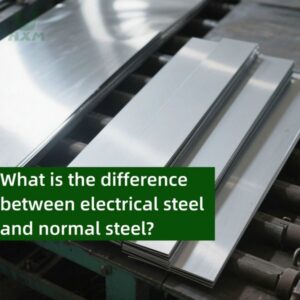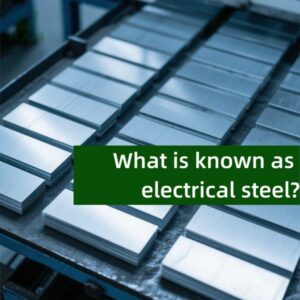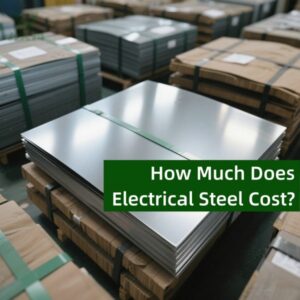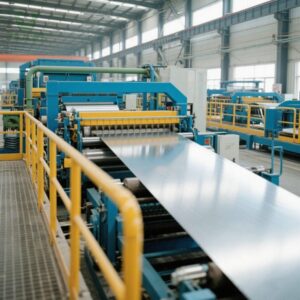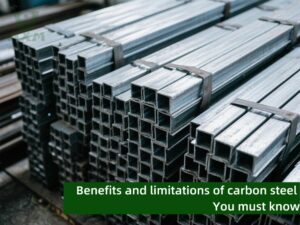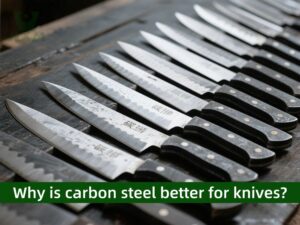What is the difference between hastelloy C276 and 316l?
- July 24, 2024
- 10:02 pm
- 2091
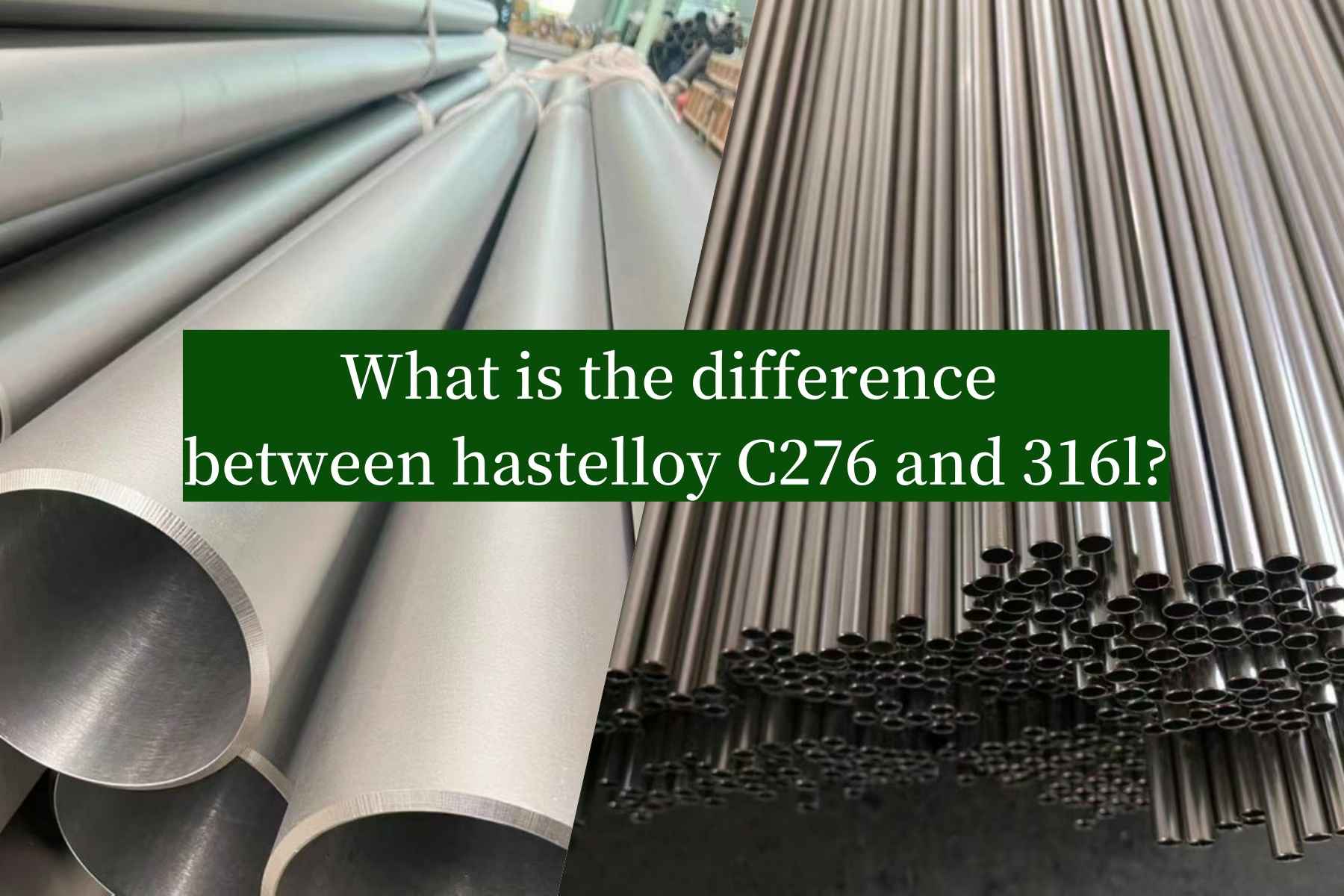
The main difference between Hastelloy C276 and 316L stainless steel lies in their chemical composition, corrosion resistance, and applications.
Chemical Composition - difference between Hastelloy C276 and 316L
Hastelloy C276 has a more complex and alloy-rich composition compared to 316L stainless steel, leading to enhanced corrosion resistance and mechanical properties.
Hastelloy C276:
- Nickel (Ni): ~57% – Provides excellent corrosion resistance in various environments.
- Chromium (Cr): ~16% – Enhances oxidation resistance.
- Molybdenum (Mo): ~16% – Increases resistance to pitting and crevice corrosion.
- Iron (Fe): ~5% – Base metal, less than in stainless steels.
- Tungsten (W): ~4% – Improves high-temperature strength and corrosion resistance.
- Cobalt (Co): ≤ 2.5% – Adds to overall strength and durability.
- Manganese (Mn): ≤ 1% – Contributes to deoxidization during production.
- Vanadium (V): ≤ 0.35% – Enhances overall strength.
- Carbon (C): ≤ 0.01% – Keeps intergranular corrosion to a minimum.
- Silicon (Si): ≤ 0.08% – Low levels prevent oxidation during welding.
- Sulfur (S): ≤ 0.03% – Low levels to avoid sulfide inclusions.
316L Stainless Steel:
- Iron (Fe): Balance (~65-70%) – Main constituent, providing structure.
- Chromium (Cr): 16-18% – Provides corrosion resistance and hardness.
- Nickel (Ni): 10-14% – Improves overall corrosion resistance.
- Molybdenum (Mo): 2-3% – Enhances resistance to pitting and crevice corrosion.
- Manganese (Mn): ≤ 2% – Acts as a deoxidizer and enhances hardness.
- Silicon (Si): ≤ 1% – Improves oxidation resistance.
- Phosphorus (P): ≤ 0.045% – Kept low to avoid brittleness.
- Sulfur (S): ≤ 0.03% – Low levels to maintain toughness.
- Carbon (C): ≤ 0.03% – Low carbon content minimizes carbide precipitation.
Corrosion Resistance - difference between Hastelloy C276 and 316L
Hastelloy C276 provides superior corrosion resistance in both oxidizing and reducing environments, making it ideal for severe conditions, whereas 316L offers good resistance suitable for less aggressive environments.
Hastelloy C276:
- Oxidizing Conditions: Excellent resistance, effective against nitric acid and other strong oxidizers.
- Reducing Conditions: Exceptional resistance, particularly to sulfuric, hydrochloric, and phosphoric acids.
- Pitting and Crevice Corrosion: Superior resistance, even in hot, chloride-containing environments.
- Stress Corrosion Cracking: Highly resistant, minimizing failure risks under stress in corrosive environments.
- Special Applications: Ideal for environments with both oxidizing and reducing conditions, handling extreme temperatures and pressures effectively.
316L Stainless Steel:
- Oxidizing Conditions: Good resistance, effective in atmospheric and mildly oxidizing environments.
- Reducing Conditions: Moderate resistance, suitable for less aggressive environments and diluted acid exposure.
- Pitting and Crevice Corrosion: Good resistance, better than 304 stainless steel, especially in chloride environments.
- Stress Corrosion Cracking: Moderate resistance, suitable for less critical applications.
- Special Applications: Suitable for marine environments, moderately corrosive chemical processing, and food and pharmaceutical industries, providing a balance between performance and cost.
Mechanical Properties - difference between Hastelloy C276 and 316L
Hastelloy C276 has higher strength and better performance at elevated temperatures compared to 316L, which offers good mechanical properties for a broad range of applications.
Hastelloy C276:
- Strength: High tensile strength, excellent for high-stress applications.
- Toughness: Maintains mechanical properties at high temperatures.
- Temperature Range: Effective in both cryogenic and elevated temperatures.
- Formability: Good ductility, can be welded and formed using standard techniques.
- Elastic Modulus: Higher modulus provides better rigidity and structural integrity.
316L Stainless Steel:
- Strength: Good tensile strength, sufficient for many industrial applications.
- Toughness: Good impact resistance, suitable for a wide range of temperatures.
- Temperature Range: Effective in moderately high and low temperatures, but not as high as those tolerated by Hastelloy C276.
- Formability: Excellent formability and weldability, commonly used in fabrication.
- Elastic Modulus: Lower modulus than Hastelloy C276, providing good flexibility for less demanding applications.
Applications - difference between Hastelloy C276 and 316L
Hastelloy C276 is used in highly corrosive and extreme environments, while 316L is versatile for a variety of less severe applications.
Hastelloy C276:
- Chemical Processing: Used in reactors, heat exchangers, and columns due to its resistance to severe corrosion.
- Pollution Control: Ideal for flue gas desulfurization systems.
- Pulp and Paper Production: Effective in bleach plants and other corrosive environments.
- Marine and Aerospace: Used in components exposed to seawater and high-temperature gas environments.
- Special Equipment: Suitable for sour gas applications and oil and gas industry.
316L Stainless Steel:
- Food Processing: Used in equipment and surfaces where hygiene is crucial.
- Pharmaceutical: Ideal for equipment and containers due to its corrosion resistance and cleanliness.
- Marine Applications: Suitable for boat fittings, coastal architecture, and other marine environments.
- Medical Devices: Commonly used in surgical instruments and implants due to its biocompatibility.
- Architectural: Popular in high-profile buildings and structures for its aesthetic appeal and corrosion resistance.
Cost - difference between Hastelloy C276 and 316L
Hastelloy C276 is more expensive due to its advanced properties and production complexity, whereas 316L offers a cost-effective solution for less demanding applications.
Hastelloy C276:
- Material Cost: Significantly more expensive than 316L due to complex alloying and production processes.
- Lifecycle Cost: Potentially lower in highly corrosive environments due to its longevity and reduced maintenance needs.
316L Stainless Steel:
- Material Cost: More affordable and widely available than Hastelloy C276.
- Lifecycle Cost: Suitable for less demanding environments, offering a balance between cost and performance.
Summary
- Hastelloy C276 offers superior corrosion resistance, high strength, and durability in extreme environments, making it suitable for harsh chemical, marine, and aerospace applications. However, it comes at a higher cost.
- 316L Stainless Steel provides good corrosion resistance and mechanical properties for a broad range of applications, including food processing, pharmaceuticals, and marine environments, at a more economical price.
FAQ
Hastelloy and stainless steel are both corrosion-resistant alloys, but they differ significantly in their composition, corrosion resistance, and applications.
Hastelloy:
- Composition: Primarily nickel-based with significant amounts of chromium, molybdenum, and other alloying elements like tungsten and cobalt.
- Corrosion Resistance: Superior resistance to a wide range of corrosive environments, including oxidizing and reducing conditions.
- Applications: Used in chemical processing, pollution control, pulp and paper production, and other highly corrosive environments.
- Cost: Generally more expensive due to complex alloying and superior properties.
- Mechanical Properties: High strength and good mechanical properties at both high and low temperatures.
Stainless Steel:
- Composition: Iron-based alloy with chromium (at least 10.5%), nickel, and other elements such as molybdenum, manganese, and silicon.
- Corrosion Resistance: Good resistance to corrosion, particularly in oxidizing environments. Different grades offer varying levels of corrosion resistance.
- Applications: Widely used in food processing, medical devices, construction, and marine environments.
- Cost: More affordable and widely available compared to Hastelloy.
- Mechanical Properties: Good strength and formability, suitable for a wide range of applications.
C276 is a specific grade within the Hastelloy family, which includes various nickel-based alloys designed for different corrosive environments.
C276:
- Composition: Contains approximately 57% nickel, 16% chromium, 16% molybdenum, 5% iron, and 4% tungsten.
- Corrosion Resistance: Known for its excellent resistance to pitting, crevice corrosion, and stress corrosion cracking. Effective in both oxidizing and reducing environments.
- Applications: Chemical processing, pollution control, pulp and paper production, marine, and aerospace industries.
Other Hastelloy Alloys:
- Composition: Varies depending on the specific alloy (e.g., Hastelloy B, C22, X), with different proportions of nickel, chromium, molybdenum, and other elements.
- Corrosion Resistance: Tailored to specific environments; for example, Hastelloy B is designed for reducing environments, while Hastelloy C22 offers broader corrosion resistance.
- Applications: Each alloy is optimized for particular applications, ranging from chemical processing to high-temperature industrial applications.
The ASTM standards provide specifications for Hastelloy C276, ensuring its quality and suitability for various applications.
ASTM Standards for Hastelloy C276:
- ASTM B575: Standard Specification for Nickel and Nickel Alloy Plate, Sheet, and Strip.
- ASTM B574: Standard Specification for Nickel Alloy Rod, Bar, and Wire.
- ASTM B622: Standard Specification for Seamless Nickel and Nickel-Cobalt Alloy Pipe and Tube.
- ASTM B619: Standard Specification for Welded Nickel and Nickel-Cobalt Alloy Pipe.
- ASTM B366: Standard Specification for Factory-Made Wrought Nickel and Nickel Alloy Fittings.
These standards cover the chemical composition, mechanical properties, and manufacturing processes for Hastelloy C276, ensuring its consistency and reliability.
Alloy 625 and Hastelloy C276 are both nickel-based superalloys, but they differ in their composition, properties, and typical applications.
Alloy 625:
- Composition: Approximately 58% nickel, 20-23% chromium, 8-10% molybdenum, 3.15-4.15% niobium, with smaller amounts of iron, titanium, and aluminum.
- Corrosion Resistance: Excellent resistance to a wide range of corrosive environments, particularly oxidizing conditions. Good resistance to pitting and crevice corrosion.
- Mechanical Properties: High strength and excellent fatigue and thermal fatigue resistance. Maintains properties at high temperatures.
- Applications: Aerospace, marine, chemical processing, and nuclear reactors.
Hastelloy C276:
- Composition: Approximately 57% nickel, 16% chromium, 16% molybdenum, 5% iron, 4% tungsten.
- Corrosion Resistance: Superior resistance to pitting, crevice corrosion, and stress corrosion cracking. Effective in both oxidizing and reducing environments.
- Mechanical Properties: High strength and good mechanical properties at both high and low temperatures.
- Applications: Chemical processing, pollution control, pulp and paper production, marine, and aerospace industries.
Alloy C276 and 316L stainless steel differ in their chemical composition, corrosion resistance, mechanical properties, and typical applications.
Hastelloy C276:
- Composition: Approximately 57% nickel, 16% chromium, 16% molybdenum, 5% iron, 4% tungsten.
- Corrosion Resistance: Superior resistance to pitting, crevice corrosion, and stress corrosion cracking. Effective in both oxidizing and reducing environments.
- Mechanical Properties: High strength and good mechanical properties at both high and low temperatures.
- Applications: Chemical processing, pollution control, pulp and paper production, marine, and aerospace industries.
- Cost: Significantly more expensive due to complex alloying and superior properties.
316L Stainless Steel:
- Composition: Iron balance (~65-70%), 16-18% chromium, 10-14% nickel, 2-3% molybdenum, and smaller amounts of manganese, silicon, phosphorus, sulfur, and carbon.
- Corrosion Resistance: Good resistance to corrosion, particularly in chloride environments. Better resistance to pitting and crevice corrosion than 304 stainless steel.
- Mechanical Properties: Good strength and toughness, suitable for a wide range of temperatures.
- Applications: Food processing, pharmaceutical equipment, marine applications, medical devices, and architectural structures.
- Cost: More affordable and widely available compared to Hastelloy C276.
Alloy 625 and 316L stainless steel differ in their chemical composition, corrosion resistance, mechanical properties, and typical applications.
Alloy 625:
- Composition: Approximately 58% nickel, 20-23% chromium, 8-10% molybdenum, 3.15-4.15% niobium, with smaller amounts of iron, titanium, and aluminum.
- Corrosion Resistance: Excellent resistance to a wide range of corrosive environments, particularly oxidizing conditions. Good resistance to pitting and crevice corrosion.
- Mechanical Properties: High strength and excellent fatigue and thermal fatigue resistance. Maintains properties at high temperatures.
- Applications: Aerospace, marine, chemical processing, and nuclear reactors.
- Cost: More expensive due to complex alloying and superior properties.
316L Stainless Steel:
- Composition: Iron balance (~65-70%), 16-18% chromium, 10-14% nickel, 2-3% molybdenum, and smaller amounts of manganese, silicon, phosphorus, sulfur, and carbon.
- Corrosion Resistance: Good resistance to corrosion, particularly in chloride environments. Better resistance to pitting and crevice corrosion than 304 stainless steel.
- Mechanical Properties: Good strength and toughness, suitable for a wide range of temperatures.
- Applications: Food processing, pharmaceutical equipment, marine applications, medical devices, and architectural structures.
- Cost: More affordable and widely available compared to alloy 625.
If you found this article good, feel free to share it on your other social media platforms.

